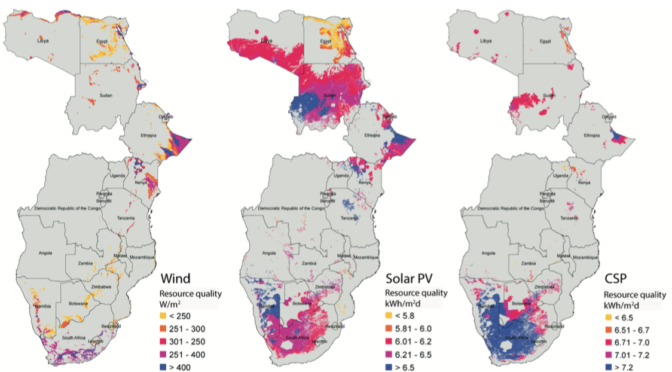Today, the Global Wind Energy Council has released the first segment of its Africa Handbook, a comprehensive guide that sets out for policy makers and stakeholders the opportunities and practical implementation steps necessary to create thriving wind energy sectors in African markets. This release comes on the occasion of Windaba 2019, the largest event of its kind for the wind power industry on the African continent.
Ben Backwell, CEO at GWEC said: “According to the IEA, only 43% of the population in Sub-Saharan Africa have access to electricity, which is a major obstacle for economic growth, and social inclusion Growing populations, urbanisation rates and power demand expected in the African Continent will put an even further strain on already struggling energy systems. Wind energy represents one of the most cost efficient, carbon free, investable, solutions for Africa’s power challenge. It is quick to install and scale and is a catalyst for large scale foreign direct investment and industrialisation. If we are to reach the Sustainable Development Goal 7 and ensure that everyone has access to affordable and clean energy, it is essential that we create policies and markets that can accelerate the development of more wind energy on the Continent. We hope that this handbook will provide a useful, step by step guide for policy makers and stakeholders who wish to take advantage of the opportunity wind energy represents for African countries”.

Jon Lezamiz, Chair of GWEC’s Africa Task Force commented: “The Handbook collects the experience that members of GWEC’s Africa Task Force, composed of global leaders in the wind industry, have gained in the wind value chain from other mature and emerging markets in order to inform and enable policy makers to establish the appropriate frameworks for fostering wind energy growth in the African continent. It is a dynamic instrument that will constantly be fed with state of art contributions from key stakeholders to tackle any new challenges and opportunities that will arise as the market develops. We are sure that this Handbook will provide invaluable guidance to boost the activity in the African wind sector in the near future.”
Karin Ohlenforst, Director of Market Intelligence at GWEC said: “Wind energy offers the opportunity of a scalable, cost-competitive and sustainable source of energy to increase electricity capacity while providing new local jobs and investments. We foresee wind energy capacity reaching over 3GW by the
end of 2023 in South Africa, and Sub-Saharan Africa alone offers a wind energy potential of 1,300GW, according to the IEA. This Handbook will cover all the major challenges that need to be addressed in order for wind energy to reach its full potential in African markets.”
The first segment of the Africa Handbook includes chapters on Policy Frameworks, Investments in Transmission Solutions, Development of a Local Value Chain and Attractive Frameworks for Private Investments. Future chapters will include further hot topics such as: Integration of Wind in Energy Markets; Bankability of Wind Energy Projects; Wind Measurement and Resources; Local Stakeholder Management; Installation Process of Wind Projects; and Hiring Workforce for Wind Projects.
This Handbook is an initiative of GWEC’s Africa Task Force, which was formed in April 2019 to support growth opportunities for wind energy on the African continent. The Task Force is composed of leading wind energy companies active in the African market as well as associations and institutions such as the South African Wind Energy Association (SAWEA) the Africa-EU Energy Partnership (AEEP) and RES4Africa. With a focus on Sub-Saharan markets, this Task Force provides input to institutional stakeholders to create a deeper understanding of the potential for wind energy in Africa.

